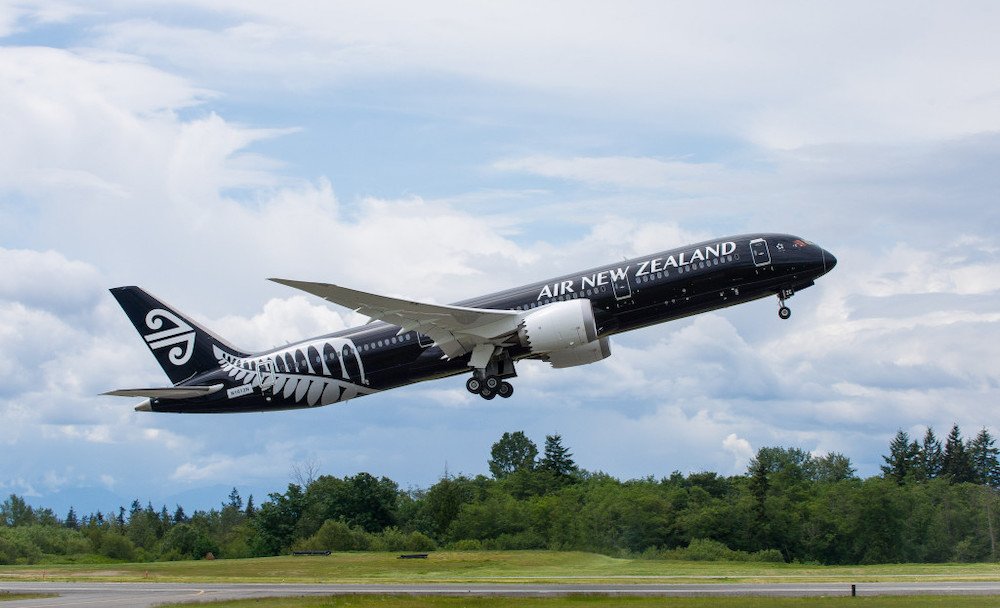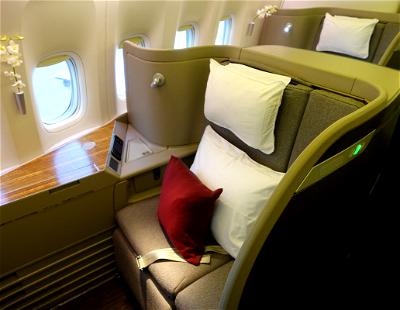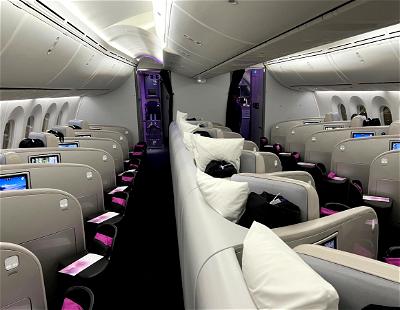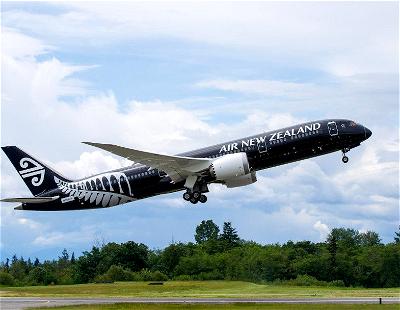Air New Zealand has announced plans to introduce free Wi-Fi on its domestic aircraft, but we’ll have to be patient…
In this post:
Air New Zealand outlines free high speed Wi-Fi goal
Air New Zealand intends to introduce free Wi-Fi throughout its domestic fleet, in partnership with Starlink. So not only will this be among the fastest Wi-Fi available on any planes, but it will be free for passengers. Starlink offers reliable high speed, low latency inflight internet. With latency as low as 30ms, passengers will be able to stream video content and much more.
There are a couple of major catches:
- Air New Zealand is only collaborating with Starlink for its domestic fleet, so don’t expect Starlink on long haul aircraft
- Air New Zealand plans to trial this Wi-Fi on the first domestic aircraft in late 2024, for a period of four to six months
- After a successful trial period, Air New Zealand plans to install this throughout the domestic fleet in 2025
If the trial is successful, you can expect Starlink Wi-Fi to eventually be installed on all Airbus A320-family aircraft flying domestically, plus on ATR-72 turboprops, representing the first time that Starlink will be installed on turboprops.
Here’s how Nikhil Ravishankar, Air New Zealand’s Chief Digital Officer, describes this partnership:
“We’re always looking at how new and innovative technology can deliver improved customer experiences and with the world’s largest satellite constellation, exploring in-motion connectivity on our aircraft with Starlink was a no brainer.
“Whether travelling for work or leisure, we know maintaining seamless internet connectivity is something that will transform the travel experience for customers. Our free and accessible WiFi onboard international flights has proved incredibly popular among customers, so we can’t wait to bring connectivity to domestic flights.”
“Don’t worry though, if you’re the type of traveller who loves some downtime while in the air, you’re under no obligation to connect and can still use the time to switch off from the world below!”

My take on Air New Zealand’s Starlink plans
It’s nice to see Air New Zealand making the investment to introduce Starlink Wi-Fi on its domestic fleet, including on turboprops, as that’s not something any airline has done before.
Now, admittedly most flights within New Zealand are extremely short, so there won’t be that much time to stay productive onboard, even with really fast Wi-Fi.
What’s interesting is that we’re seeing Starlink being introduced on the carrier’s shortest flights, as Air New Zealand continues to work on installing a slower Wi-Fi system on its international fleet. Presumably that just comes down to when contracts were signed, and technology improving at such a fast pace.
Assuming everything goes as planned, it sounds like we can look forward to much faster Wi-Fi on Air New Zealand’s domestic aircraft than on the carrier’s international aircraft.
Bottom line
Air New Zealand plans to install free Starlink Wi-Fi on its domestic jets, including Airbus A320-family aircraft and ATR-72 turboprops. The plan is to trial this in late 2024, and then later in 2025 install it on a widespread basis. It’s amazing to see how inflight connectivity continues to improve, not just in terms of speeds, but also in terms of pricing.
What do you make of Air New Zealand planning on adding Starlink Wi-Fi?





A move in the right direction, albeit a very slow rollout. The consumer is more and more expecting to be connected whenever they want, wherever they are with top quality connectivity for free. One just has to work out if your business model can sustain it. I would have thought Air NZ's astronomical airfares could comfortably sustain a little free Wifi!
Starlink is actually well suited to long-haul, over-water service because their coverage and bandwidth is the same everywhere. So in the middle of the Pacific, where only planes and boats are going to use it, the service is going to be really good. Heavily populated areas, in contrast, will have poorer performance, because there is more demand for the system. To be sure, the service is still really good, but it's not efficiently distributed.
Geosynchronous...
Starlink is actually well suited to long-haul, over-water service because their coverage and bandwidth is the same everywhere. So in the middle of the Pacific, where only planes and boats are going to use it, the service is going to be really good. Heavily populated areas, in contrast, will have poorer performance, because there is more demand for the system. To be sure, the service is still really good, but it's not efficiently distributed.
Geosynchronous satellite systems don't have the above problem, because they are by definition parked over a certain area and can focus their bandwidth. But they have the problem of high latency.
All in all, Starlink is a good choice for ANZ, even domestically, because New Zealand is pretty sparsely populated to begin with.
Ideally, an airplane wi-fi system combines the benefits of both low-earth orbit satellites like Starlink, and larger geosynchronous ones. Those systems are coming...
Why do populated areas get high demand for Starlink though? Surely the fiberoptic is both cheaper, faster and more reliable? I always assumed that the whole point of Starlink is to provide service in areas where it isn't feasible to provide fiberoptics.
In this case, an example of a "populated area" is something like the Eastern Seaboard, which might have lots of people using Starlink if they live out in far suburbs / exurbs / rural areas. Yes, someone in New York City or Boston will be much better served by fiber, but there are still lots of people beyond easy fiber coverage who may choose to use a satellite service. Plus you have greater maritime, military,...
In this case, an example of a "populated area" is something like the Eastern Seaboard, which might have lots of people using Starlink if they live out in far suburbs / exurbs / rural areas. Yes, someone in New York City or Boston will be much better served by fiber, but there are still lots of people beyond easy fiber coverage who may choose to use a satellite service. Plus you have greater maritime, military, and other mobile users.
Contrast that to the middle of the ocean, where you have zip, zilch, nada, except for airplanes and boats.
With Hawaiian Airlines contracting Starlink for its onboard internet service (delayed until early next year, so just a few month(s) away), one would assume there is a lot of connectivity in that part of the pacific but I wonder what the rest of the pacific is like to Asia and Australia beyond Hawaii? Would be great if Qantas could go for Starlink now that Viasat 3 seems to be delayed. Not having WifI on the...
With Hawaiian Airlines contracting Starlink for its onboard internet service (delayed until early next year, so just a few month(s) away), one would assume there is a lot of connectivity in that part of the pacific but I wonder what the rest of the pacific is like to Asia and Australia beyond Hawaii? Would be great if Qantas could go for Starlink now that Viasat 3 seems to be delayed. Not having WifI on the 13-17 hour long flights to / from the USA to Australia is a real pain when trying to stay productive. Just not sure how robust the Starlink network is. If anyone knows that would be great to hear about.
Will probably be awhile before we see Starling on long haul anywhere - Starlink is very particular about where it can and can not provide service
Not just that, but a growing number of websites block access if you are trying to access via Starlink (maybe the Elon Musk ick factor) so it isn't always ideal unless you use a VPN.
Latency isn't that important for streaming video. For video it's just about bandwidth. Latency is much more key for stuff like gaming and VPNs, where there is rapid back-and-forth exchange of data.
Pre-Starlink, the geosynchronous satellite internet had huge latency owing to the high altitude of the satellites. That system could stream okay, but working through a VPN was impossible.
Interesting, I did not know that.